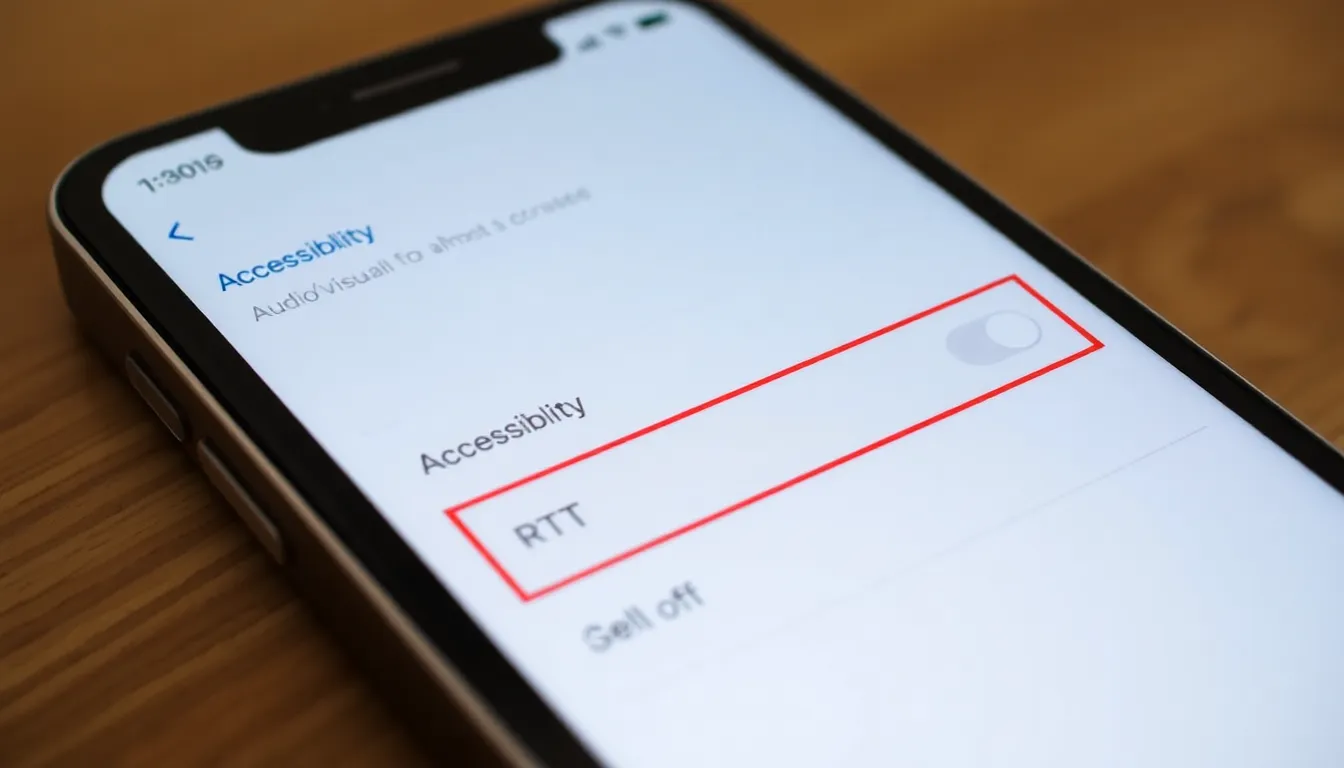Ever found yourself in a texting tangle on your iPhone, wondering what that mysterious RTT feature is? You’re not alone! Real-Time Text (RTT) might sound like a fancy tech term, but for many, it’s just a source of confusion. It’s designed to make communication smoother, especially for those who are deaf or hard of hearing. But let’s face it, if you’re not using it, it can feel like an unwanted guest at a party—awkward and just not your vibe.
Table of Contents
ToggleUnderstanding RTT on iPhone
RTT, or Real-Time Text, provides an effective communication method for users, especially those who are deaf or hard of hearing. This feature supports live text conversations during phone calls.
What Does RTT Stand For?
RTT stands for Real-Time Text. This technology enables text to be transmitted instantly as it’s being typed. Unlike traditional texting, RTT provides a seamless experience, allowing both parties to read messages concurrently. Real-Time Text enhances communication by reducing delays often associated with standard text messaging.
How RTT Works on iPhone
RTT operates by sending text messages in real time during a phone call. Users can find this feature in the accessibility settings on their iPhones. When using RTT, each character appears on the recipient’s screen as it’s typed, promoting clear and immediate communication. This technology supports both outgoing and incoming messages, allowing conversations to flow naturally. Participants can also switch between text and voice during the call, making it versatile for various communication preferences.
Turning Off RTT on iPhone

Disabling the Real-Time Text feature on an iPhone can streamline communication for users who do not need it. Follow these steps to easily turn off RTT.
Step-by-Step Guide to Disable RTT
- Open the Settings app on the iPhone.
- Scroll down and tap on Accessibility.
- Select Audio/Visual.
- Find the RTT option and toggle it off.
- Confirm the change, if prompted.
Following these steps effectively turns off RTT, allowing for a more traditional calling experience.
What to Expect After Turning It Off
Turning off RTT removes the option to send real-time text during phone calls. Users can rely only on voice communication, which may simplify interactions. Incoming calls will no longer display RTT options, making it easier to focus on conversations. Some may prefer this traditional method of communication, finding it less complicated. Overall, disabling RTT enhances the calling experience for those who do not utilize text features.
Benefits of Disabling RTT
Disabling the RTT feature on iPhones offers several advantages, particularly for users unaccustomed to text-based communication during calls.
Improved Call Quality
Improved call clarity occurs when RTT is turned off. Users often experience clearer audio since the device focuses solely on voice communication. Background noise and technical glitches associated with simultaneous text transmission diminish with the absence of RTT. Callers report a more seamless experience when relying exclusively on their voice. Enhanced clarity fosters better dialogue, which leads to more effective conversations. Users can engage fully without interruptions from text notifications or delays.
Easier Communication for Some Users
Easier communication emerges when disabling RTT. Many individuals find traditional voice calls simpler and more natural. Switching to voice-only interactions leads to less confusion, especially for those unfamiliar with text-to-speech formats. This change streamlines the communication process, allowing users to focus on conversation and verbal cues. Enhanced fluidity in exchanges becomes apparent, enabling more genuine connections. Voice communication often resonates more with a broader audience, including those who may not be comfortable with RTT technology.
Potential Drawbacks of Disabling RTT
Disabling RTT could lead to communication challenges for specific users. This technology offers essential support for individuals who depend on text for clarity and understanding.
Impact on Users Who Rely on RTT
Individuals who utilize RTT rely on it for effective communication during phone calls. Disabling this feature removes their ability to send and receive text in real time. For those who are deaf or hard of hearing, the absence of RTT may hinder conversations, leading to frustration and miscommunication. Clear, instant messaging plays a vital role in their interactions. Reduced access to text can create barriers that traditional voice calls do not address, making it difficult for these users to express thoughts accurately.
Alternatives to RTT
Several alternatives exist for users who find RTT unnecessary. Voice calls remain the most common choice for general communication. Text messaging apps, such as WhatsApp or iMessage, provide seamless alternatives for those who prefer written communication. These platforms often include features that allow users to convey complete thoughts without relying solely on voice. Additionally, video calls enable expressive communication through visual cues and lip reading, making it an effective substitute for users who might benefit from more than just audio. Exploring these options can enhance user experiences while maintaining clear lines of communication.
Disabling the RTT feature on an iPhone can significantly simplify communication for users who prefer traditional voice calls. By turning off RTT, individuals can enjoy clearer audio and a more straightforward calling experience, free from the distractions of real-time text transmission. While this adjustment may enhance interactions for many, it’s crucial to recognize that those who rely on RTT for effective communication might face challenges. Exploring alternative communication methods can help maintain clarity and connection. Ultimately, users should choose the option that best suits their needs and preferences, ensuring their conversations remain effective and enjoyable.




